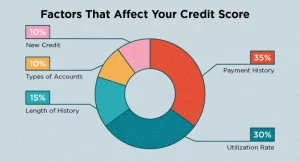How to manage cash flow?
Market conditions can change any time but one thing remains valid for every size of company and that is the importance of Cash. Without appropriate cash flow optimization business might find it difficult to remain profitable and can be at the risk of bankruptcy when they can’t pay their bills on time
Medium to small businesses are especially susceptible to cash flow challenges and liquidity issues. This makes is critical to set a proper process in place in order to manage the challenges before they arise.
Covid-19 affected every business in different ways but one thing it did was the same, it put working capital on every business owners worry list. According to a 2021 Federal Reserve study 65% of small businesses struggled with paying operational expenses in the year 2020 and almost half of them grappled with paying timely rent or debts.
This is why having a well-structured approach to manage cash flow is the first step in fully optimizing your business. This will help to provide liquidity and fund the growth along with stabilizing the organization during tough times.
Capital Management
The first approach is managing the working capital. A working capital is the difference between present assets and liabilities. It corresponds to the current liquidity available for a firm to meet its’ short term financial commitments.
Firstly learn to optimize your receivables. Businesses often tend to relax their payment terms in order to generate more business for example allowing client’s late payments or giving out discounts as there are no formal follow up processes. This can be a co relation between business liquidity and profitability. If you are too flexible with your customers you might see a lot of sales but it will lack in cash tough.
How can you remedy this situation? Your finance and sales department need to work in tandem with each other this will help to develop terms of payment that makes sense for both the business as well as the customers.
Automatize the billing process. Set deadlines internally to send invoices within a day or two max of a purchase order and make sure someone is particularly incharge of customer master data. Set a proper collection strategy in place. Keep a check on over dues every month to every week. Make sure it’s easy to keep a check on your receivables report. Define a process and put in place reminders for checking said receivables. Maintain a close relationship with the sales team so you can effectively reach out to overdue clients
While you can set your own terms to define your receivables, you need to follow somebody else’s terms when it comes to payables. Don’t just negotiate price but also negotiate payment terms with vendors. We often focus too much on pricing and very little on how payment terms will have an impact on our cash flow. When reviewing a new vendor don’t forget to negotiate payment terms like minimizing advance payments or credit terms that align with your cash flow. Doing this might be a little challenging for new business but once the business grows and the market reputation improves you can always renegotiate the payable terms. Make sure your invoices and purchase orders match promptly this way you can know at a glance weather you are on track with your expenses or not.
Inventory can be the biggest hidden money pit especially for small to medium businesses. In order to avoid tying up your cash on inventory fix an inventory level something that is sufficient to manage the demand without going overboard. Reducing the stock keeping units for newer or smaller business can be a good strategy.
Take help of a software program that will manage your inventory for you. Or at least make sure you have a process in place to minimize buying too much stock in advance and to sell the older stock before newer ones.
Make a cash flow forecast
Monitor your cash flow closely, don’t wait till you encounter a liquidity issues. Create a cash flow forecast of 12 to 18 months or what works best for your business. This will enable you to roll forward as you will have more data available on hand.
The operation of cash is very important and should be your primary focus. This will determine your needs for financing, reinvesting or strategic initiatives. The main idea behind cash flow forecast is to have enough information so you can repurpose it when needed.
Keep your forecast model as simple as possible, don’t unnecessarily complicate it or it will lead to errors. Keep it organized, simple and clear.
Do a scenario planning and be prepared for challenges.
In these uncertain times it may come in handy to do scenario planning and have a plan in the pocket for the actions your business might need to take to survive. Be prepared with a best case and worst case scenario. In case of either one estimate the time the crises will last and the initiatives you will put in place for your business to stay afloat. Learn to manage shortage and liquidity crises. These crisis could incur to due changing market conditions or operational inefficiencies. At such times keep in mind to buy enough time to address the challenges.
Before you make any strategic or operational changes be clear on how much time you might need to buy. Concentrate on solving short term crisis in ways that will in turn support your long term goals. For example you can focus on products or services that give a higher margin, leasing assets is another thing you can do, give priority to less risky clients, take pre orders etc.
Another important thing to keep in mind is communication. Communication with your customers and communication with your creditors. In order to buying more time the best practice might be to talk to your creditors about it.
People think that in order to protect the reputation of the company, withholding information from the vendors during a liquidity crisis is a given. But it is actually not the case, staying silent or lying will damage your reputation more. Procrastinating payments without giving any explanation will anyways have an impact on your vendors trust. Instead be upfront with them, tell them what is going on with your business, if you are in a liquidity crisis, and tell them you have a crisis plan in place and a time period when you plan to pay them. Optimizing excess liquidity: Though this might seem to occur less frequently and might seem less stressful then a cash flow crisis, but it is equally important to get it right. The risk is in appropriating capital where there is no strategic gain for the business.
The best ways in which you can optimize the excess cash is by identifying strategic priorities that work towards the business and dispensing enough capital to meet those goals. You can see what vendor is giving discounts for an early payment on the supplies. Keep an appropriate amount on the side as a safety net for tough times.
A lot of companies struggle with implementing an effective cash flow managing strategy. It is tempting for growing businesses to look for external sources for funding. Applying for traditional loans can be an arduous task. According to a survey by Federal Reserve barely half of the small companies that apply for loans receive the full amount that they are after. Seeking external financing can also mean giving personal guarantees and collaterals.
A better step is to apply for payroll funds with 1 Click Payroll loan. Once you don’t have to worry about allocating your cash flow in paying payrolls you can divert that capital elsewhere like inventory. This will optimize your cash flow and keep your business growing strong.




